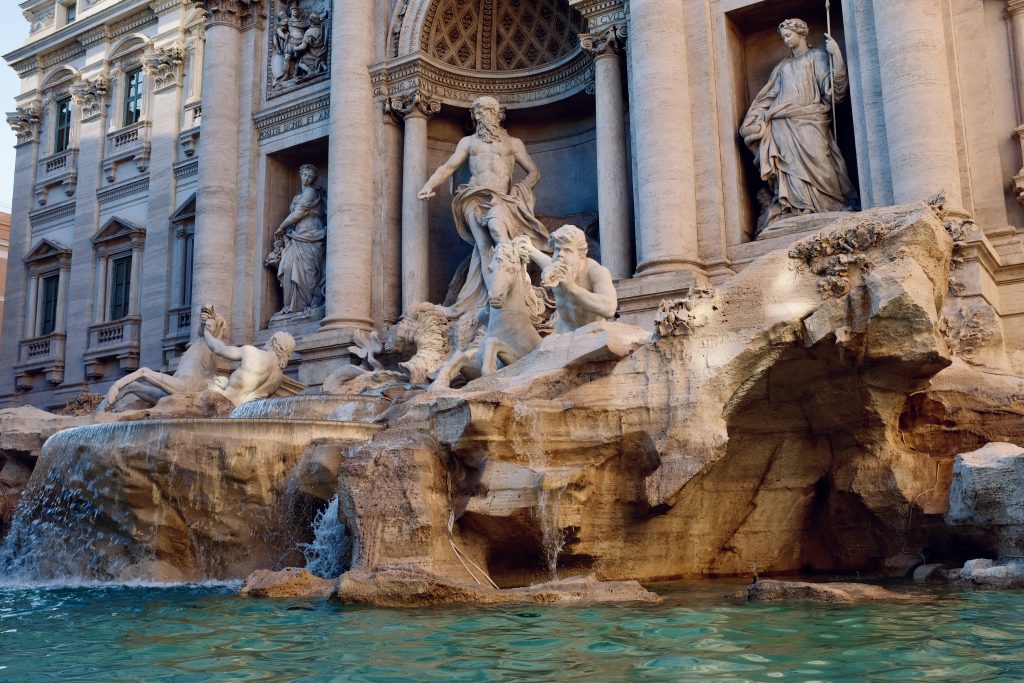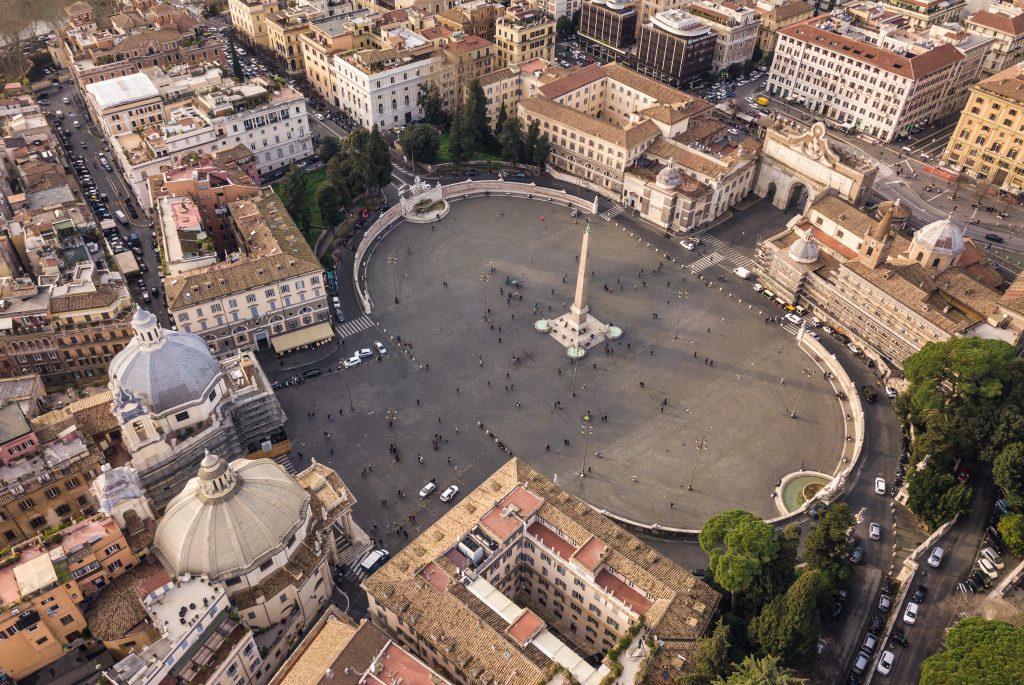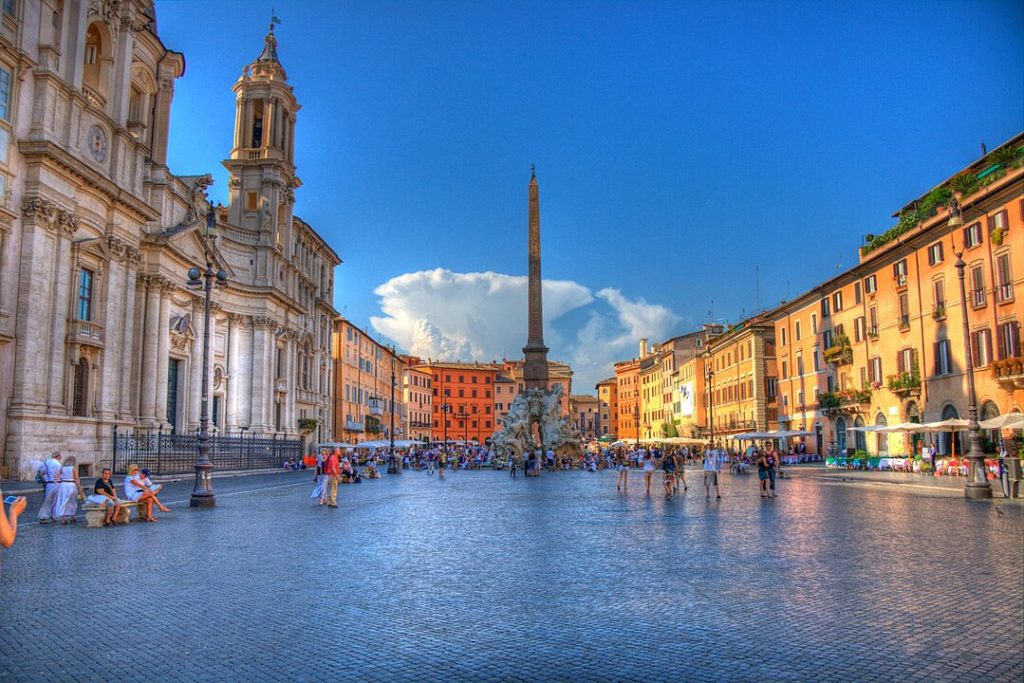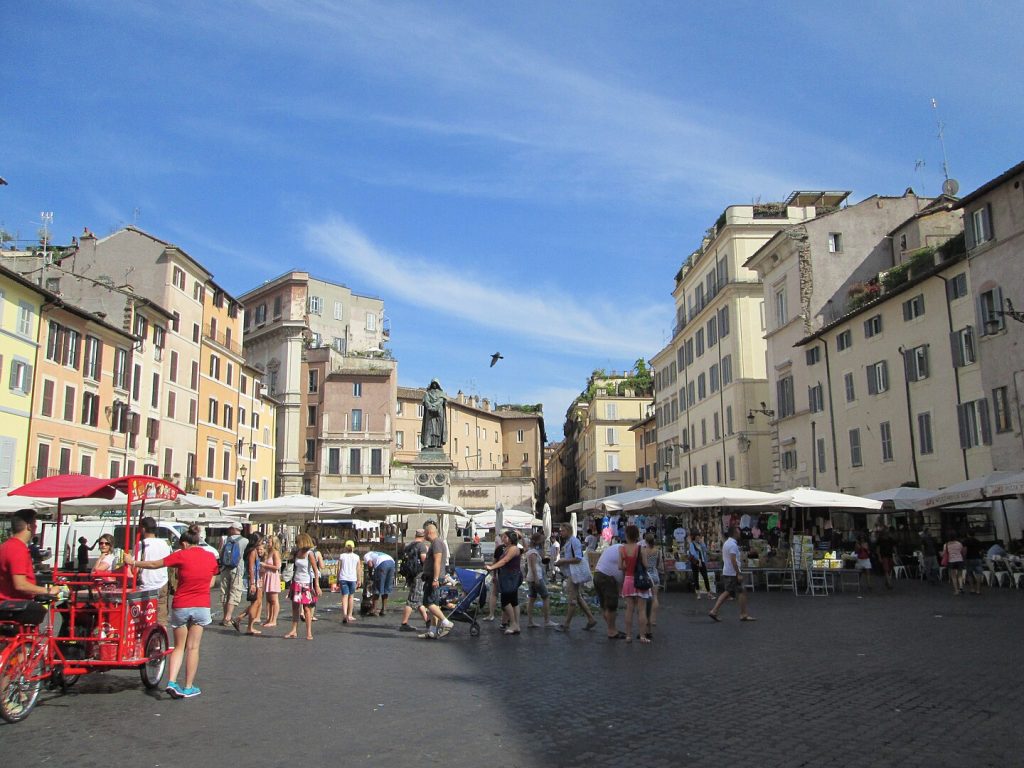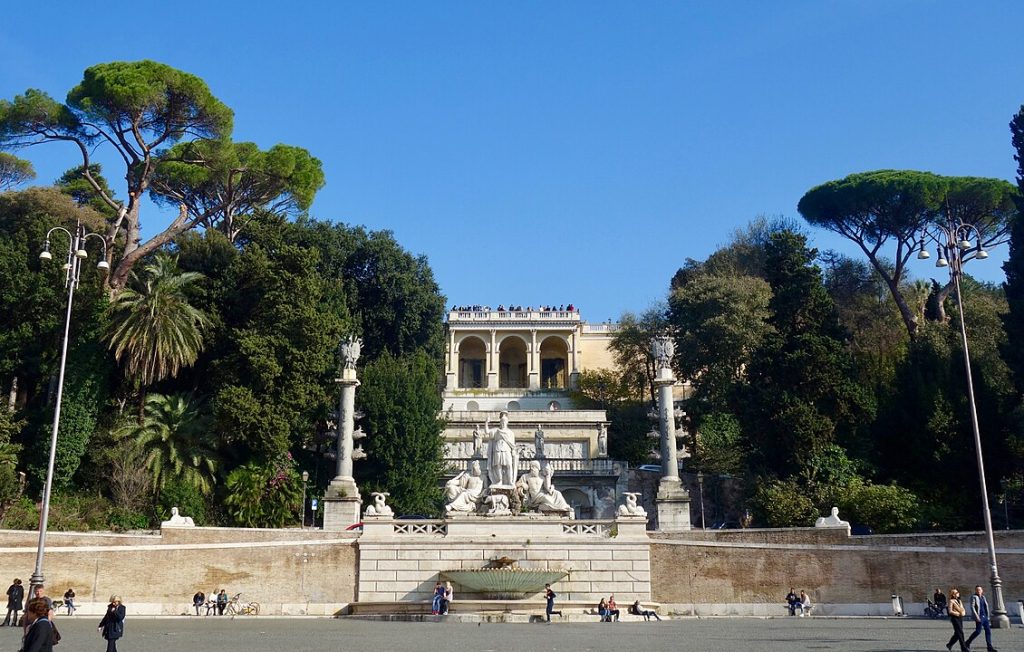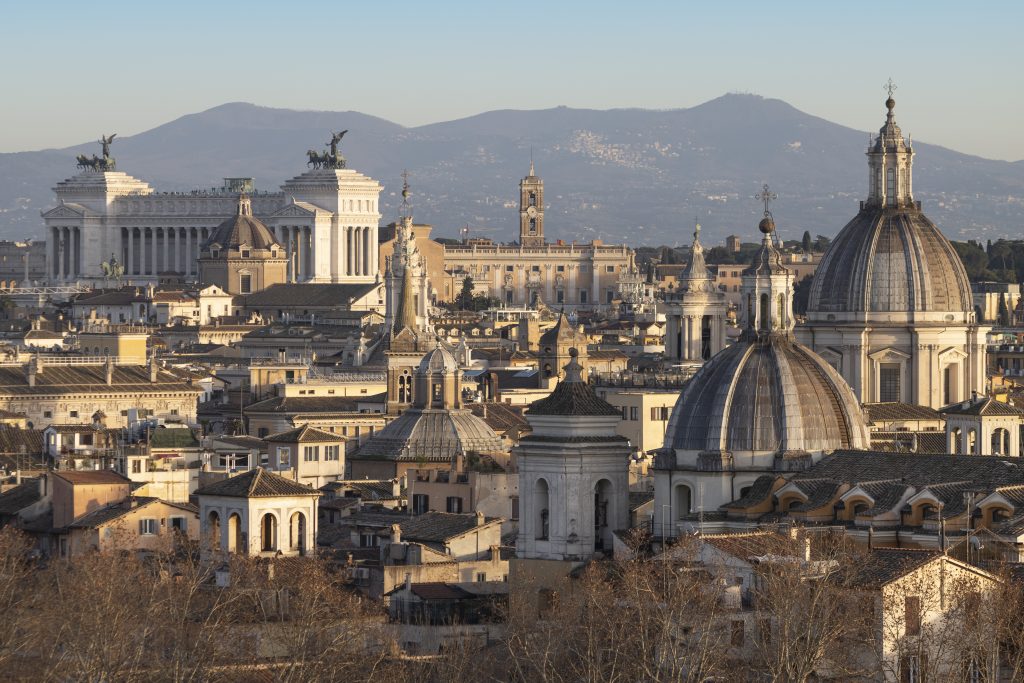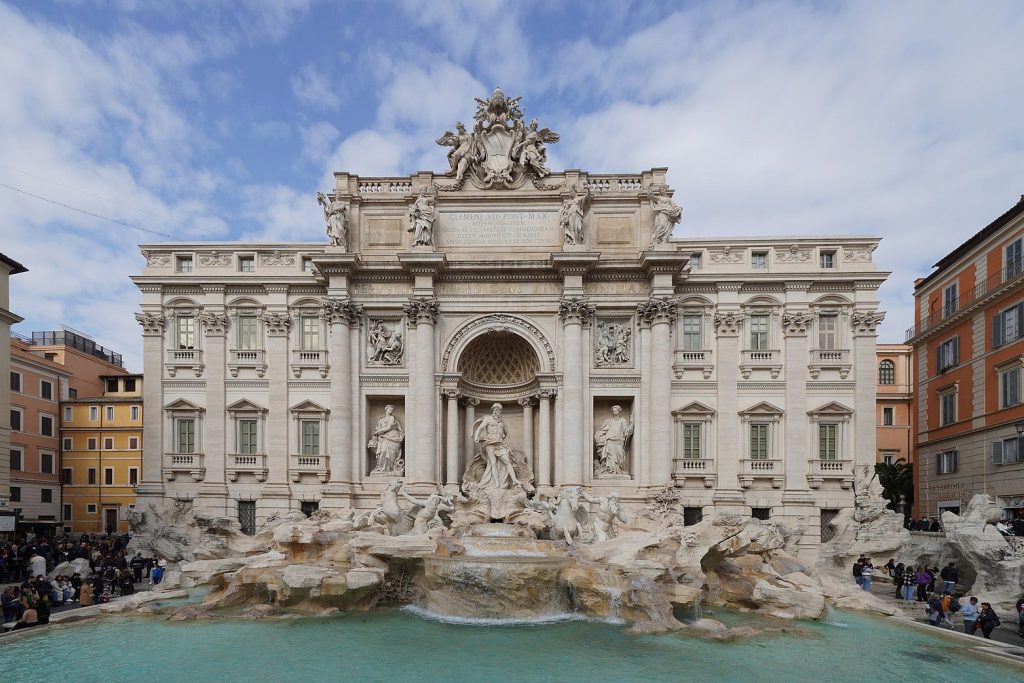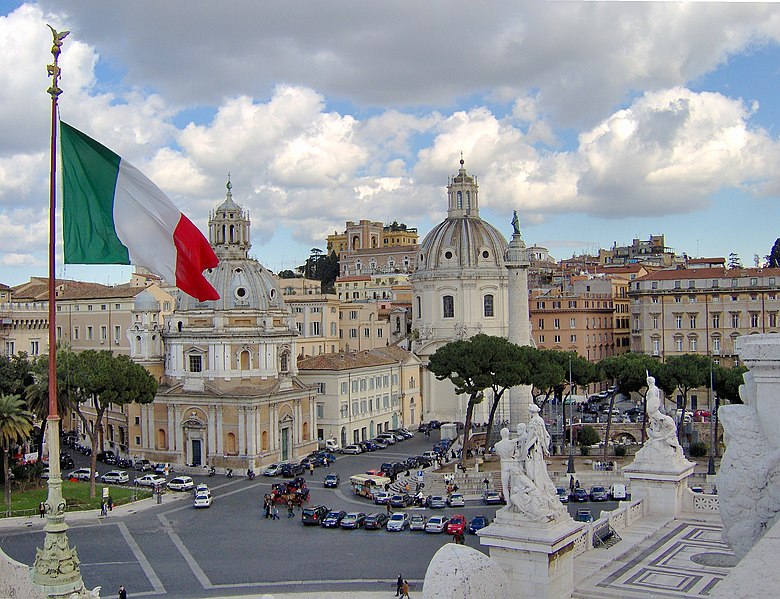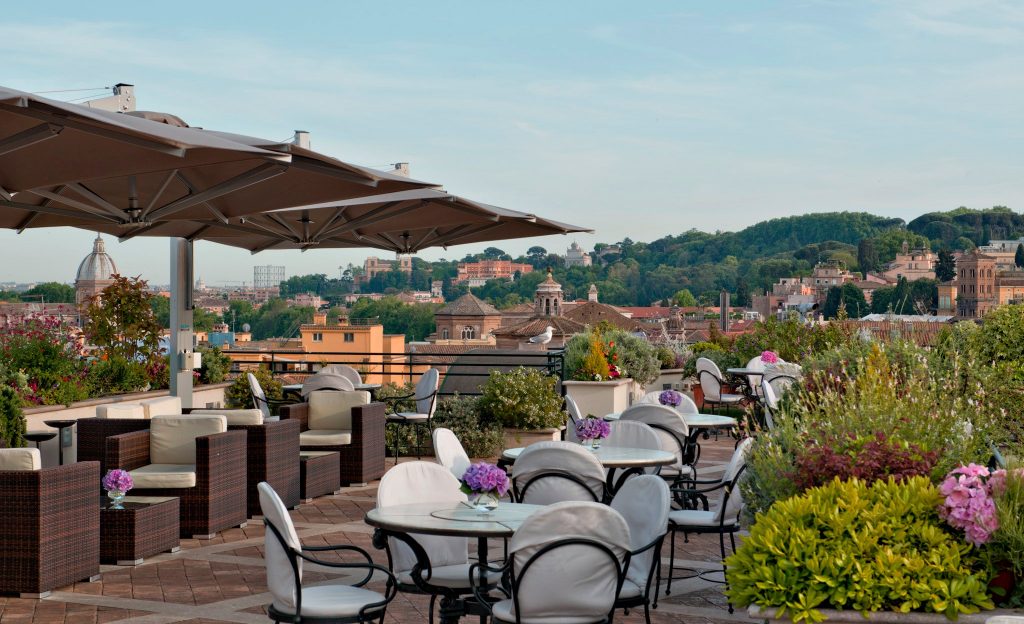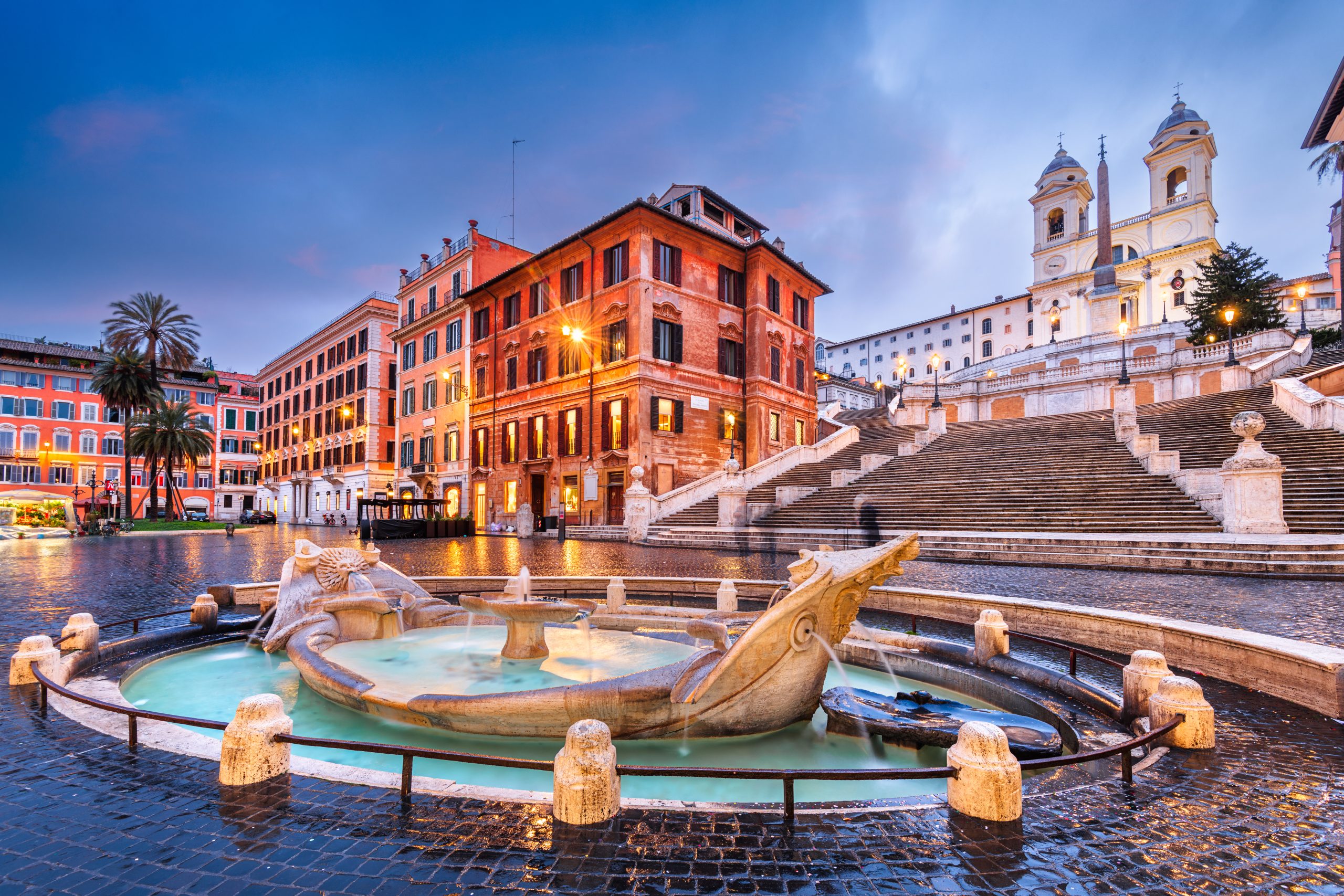
Spanish Steps (Scalinata di Trinità dei Monti) is one of the most famous tourist attractions Rome and one of the most photographed places in Italy. Monumental staircase from the 18th century attract tourists, artists and locals who like to squat here, looking out over the bustling Spanish Square.
The elegant design combines Church of Trinità dei Monti with a prestigious street Via dei Condotti, creating a unique backdrop for walks and meetings.
In the article you will learn about the history of the place, its architectural features and cultural significance. We will also suggest what to see in the immediate area.
1️⃣ History of the Spanish Steps
Want to discover more secrets of antiquity? Check it out:
👉 The Colosseum - 10 fascinating facts about the symbol of Rome
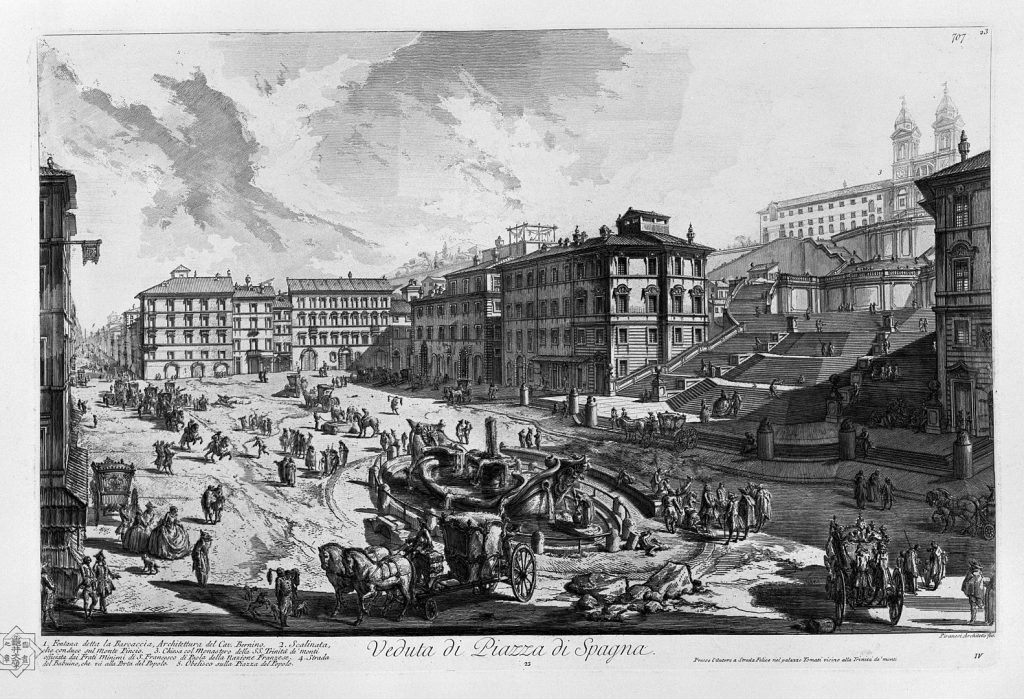
Although today the Spanish Steps are a symbol of romantic strolls and a favorite backdrop for photos, their history dates back to the 18th century and is associated with the policy, religion i art.
💠 Genesis and funders
The idea for the monumental staircase was conceived in the 17th century, but was not realized until the years 1723-1726. The project was funded by French diplomat Étienne Gueffier, and the architect became Francesco de Sanctis. The structure was intended to connect the French church of Trinità dei Monti with the Spanish plaza below - hence the name.
💠 Symbolic bridge of cultures
The staircase became a visual and symbolic link between the two powers of the time: France (owner of the church) and Spain (Embassies on the Square). Their completion was not only an architectural success, but also a diplomatic.
💠 Changing fortunes in the 19th and 20th centuries
In the 19th century, the staircase began to attract artists, poets and residents, and in the twentieth century - the mass tourism. They have required renovation at various times, especially due to damage and heavy use.
💠 Renovation and protection
The staircase has been renovated several times in recent decades, with the 2016 extensive maintenance has been carried out. They are now under strict protection - it is not allowed on them mess nor sit down with food, which is intended to preserve their charm and cleanliness.
2️⃣ Architecture and symbolism
Are you interested in architecture and history? Read:
👉 The 5 most beautiful squares of Rome you must see
The Spanish Staircase is not only a functional structure, but also a work of art that fits harmoniously into the Roman urban space and carries rich symbolism.
💠 Baroque elegance
Designed by Francesco de Sanctis, stairs count 135 degrees and were built in the style of baroque. Their shape is reminiscent of a fan that spills seamlessly into Spanish Square, creating an elegant setting and a place to relax.
💠 Perspective and harmony
The design is based on the principles of symmetry i prospects, typical of the Baroque. From each level there is a different view - up on the church Trinità dei Monti, down on the busy Piazza di Spagna and Via dei Condotti.
💠 Detail and meaning
Balustrades, terraces and places for flower pots have been arranged along the stairs. In spring, during the blooming of azaleas, the entire complex turns into a colorful spectacle. The staircase symbolizes spiritual ascent - lead from the everyday world towards the temple.
💠 Barcaccia Fountain
At the foot of the stairs is a fountain Barcaccia, by Pietro and Gian Lorenzo Bernini. Its boat shape is a reference to the Tiber flood of the 16th century. It is a popular landmark and meeting place.
3️⃣ Spanish Square and stairway environment
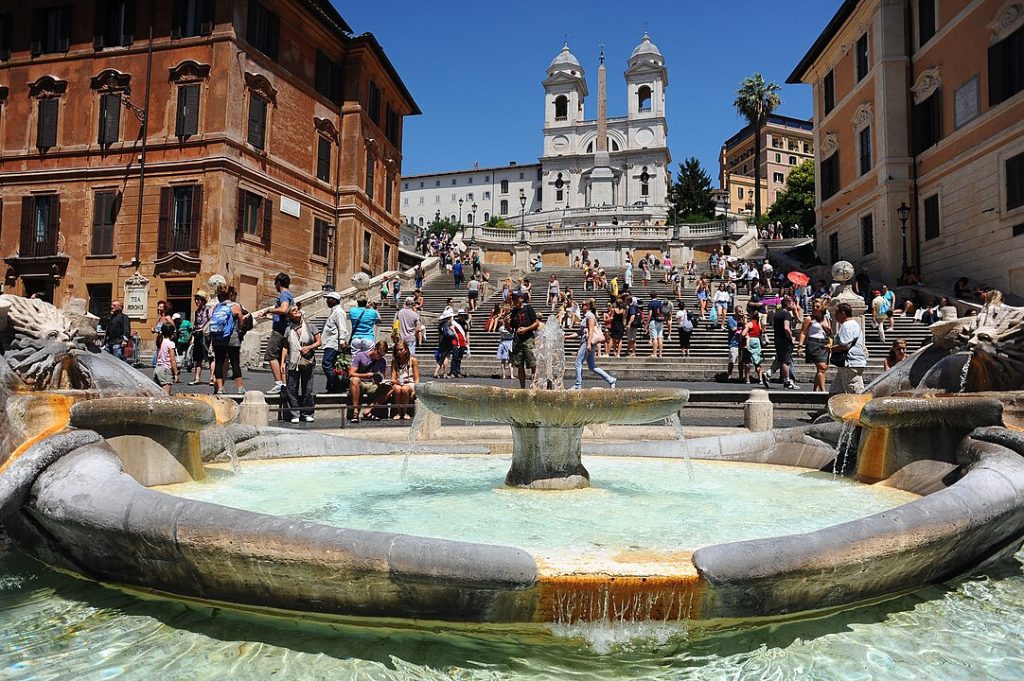
Directly at the foot of the Spanish Steps stretches one of the most famous squares in Rome. Piazza di Spagna, or Spanish Square. It is a place teeming with life, elegance and history.
💠 Name and embassy
The name of the square is derived from the located here since the 17th century Spanish Embassy to the Holy See. It was her presence that determined the name of both the square and the stairs themselves.
💠 The cultural and commercial heart of Rome
For centuries, Spanish Square has been a meeting place for artists, poets, painters and travelers. Today it serves a similar function - all around you will find luxury boutiques, bookstores and cafes overlooking the baroque architecture.
💠 Barcaccia fountain and its significance
At the foot of the stairs is located the aforementioned Barcaccia fountain - One of the most characteristic points of the square. Its gentle hum and the form of the boat add to the peaceful charm of the place.
💠 Via dei Condotti - fashion street
Directly opposite the staircase begins the Via dei Condotti - a famous street with boutiques of brands such as Gucci, Prada, Dior and Valentino. This is a must stop for fashion and style lovers.
4️⃣ Spanish Steps as a place of meeting and culture
Looking for attractions for the whole family? Check also:
👉 Top 10 - attractions for children in Rome
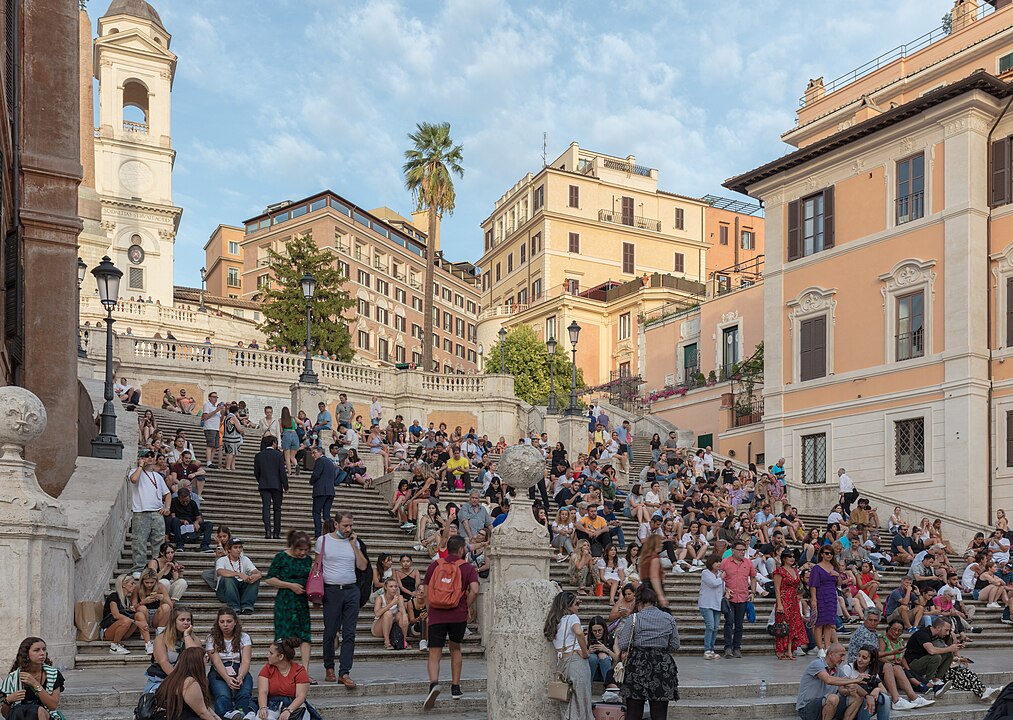
The Spanish Steps is not only a monument, but also a an important social space, which brings together people from all over the world - tourists, local artists, lovers and residents of Rome.
💠 Natural Tribune
Thanks to its form and location, the staircase is ideal for sitting, watching city life and admiring sunsets. It's a sort of natural audience, open to everyone.
💠 Stage for artists
For years, the following have been appearing on the steps street artists - painters, musicians, mimes. Their performances bring an element of spontaneous culture And they give the place a unique atmosphere.
💠 Inspiration for creators
Many writers and painters of the 19th century sought inspiration here. John Keats, a well-known English Romantic poet, lived right next to the square - today his former apartment houses the Keats and Shelley house-museum.
💠 Meetings without words
Although we come from different countries and cultures, on the Spanish Steps everyone can sit for a while, talk, eat ice cream or just look at the world. It's universal point of contact, whose atmosphere is difficult to convey in words.
5️⃣ Events and traditions related to the Steps
Although the Spanish Steps is primarily a historical monument and tourist attraction, it also hosts events throughout the year that have become a permanent fixture in the roman traditions calendar.
💠 Spring azalea festival
Every spring-usually in April and May-the stairs are covered with hundreds of pots of blooming azaleas. This spectacle delights both tourists and locals. Colorful flowers contrast with the bright stone of the staircase, creating the perfect backdrop for photos.
💠 Christmas tree and decorations
In December, the Spanish Steps and Spanish Square are decorated with Christmas decorations, and a traditional Christmas tree appears nearby. In the evenings, the place gets a unique festive atmosphere.
💠 Tribute to the Immaculate Conception (December 8)
On this day, the Pope visits the nearby obelisk of Mary At Piazza Mignanelli, just off the piazza. Firefighters climb a boom to place a wreath on the statue of Mary. This is one of the the most symbolic religious events In this part of Rome.
💠 Fashion shows and media events
Due to its prestigious location and photogenic nature, the Spanish Steps are also sometimes used as a scenery for fashion shows, advertising campaigns and artistic events. However, due to the protection of the monument, such events are strictly controlled.
6️⃣ Spanish Steps in film and pop culture
The Spanish Steps have appeared in movies, commercials and music videos for years, becoming one of the pop culture icons associated with Rome. Their romantic nature and elegant setting attract creators from all over the world.
💠 "Roman Holiday" (1953).
It is here Audrey Hepburn and Gregory Peck stroll in the film's iconic scene Roman Holiday. The production made the Spanish Steps famous around the world, making them a must-see on any movie tour of Rome.
💠 Fashion and advertising
Many fashion houses has used the staircase as a backdrop for its campaigns - from Valentino shows to photo shoots for Vogue or Elle. This place symbolizes elegance, class and style, fitting perfectly into the world of luxury.
💠 Music and videos
Although less frequent than in films, staircases also appear in music videos - especially those inspired by European climate. Their classical form and central location in Rome add character and depth to the shots.
💠 Rome's pop culture symbol
In guidebooks, postcards and social media, the Spanish Steps are portrayed as a icon of the city, alongside the Colosseum and Trevi Fountain. Their presence in pop culture not only increases their popularity, but also solidifies their position as one of the most beautiful places in Europe.
7️⃣ Rules for visiting and protecting the monument
Do you love panoramas and atmospheric views? Check it out:
👉 Viewpoints and terraces in Rome

Although the Spanish Steps draw crowds of tourists, they are not a regular city attraction - they protected monument, the use of which is subject to specific rules. Their purpose is to preserve the beauty and safety of this unique place.
💠 Ban on eating and drinking
As of 2019, the following applies prohibition of eating, drinking and picnicking On the stairs. The new law is intended to protect the marble structure from dirt and damage.
💠 Ban on sitting down with food
You can sit on the steps, but you must not do so with food or drinks. There are penalties for breaking these rules mandates, and in the case of major violations - even the intervention of the municipal police.
💠 No access for vehicles
The stairs are completely closed to traffic - No vehicles, not even electric scooters, are allowed to travel on them. This is part of an effort to protect the structure and the comfort of pedestrians.
💠 Monitoring and patrols
Spanish Square and the stairs are covered constant monitoring and patrols of law enforcement services. The presence of officers is not only for control purposes, but also for prevention - so that the place remains safe and well-maintained.
8️⃣ Practical information for tourists
Planning to visit the Spanish Steps? Here's a handful of practical information to make your visit easier and help you fully enjoy this unique place.
💠 Location
The stairs are located at Piazza di Spagna, in the heart of Rome. It's an excellent starting point for further sightseeing - nearby attractions include the Trevi Fountain, the Pantheon and the Via del Corso.
💠 Access
The easiest way to get here is by subway - Line A, Spagna station, which is located just off the square. You can also walk from many other sights in the city center.
💠 Tour Hours
Stairs are available 24/7 and free of charge. It's worth coming early in the morning or late in the evening to avoid the crowds and see the place in a quieter atmosphere.
💠 Amenities in the area
Nearby you will find cafes, restaurants, public toilets and stores. However, it is worth remembering that prices in this part of Rome are usually higher than in other neighborhoods.
💠 Safety and behavior
Rome is a tourist city, so it's always a good idea to keep an eye on your belongings. On the stairs, there are mandatory housekeeping, and any inappropriate behavior (e.g., eating, making noise) can result in a warning or fine.
9️⃣ Interesting places nearby
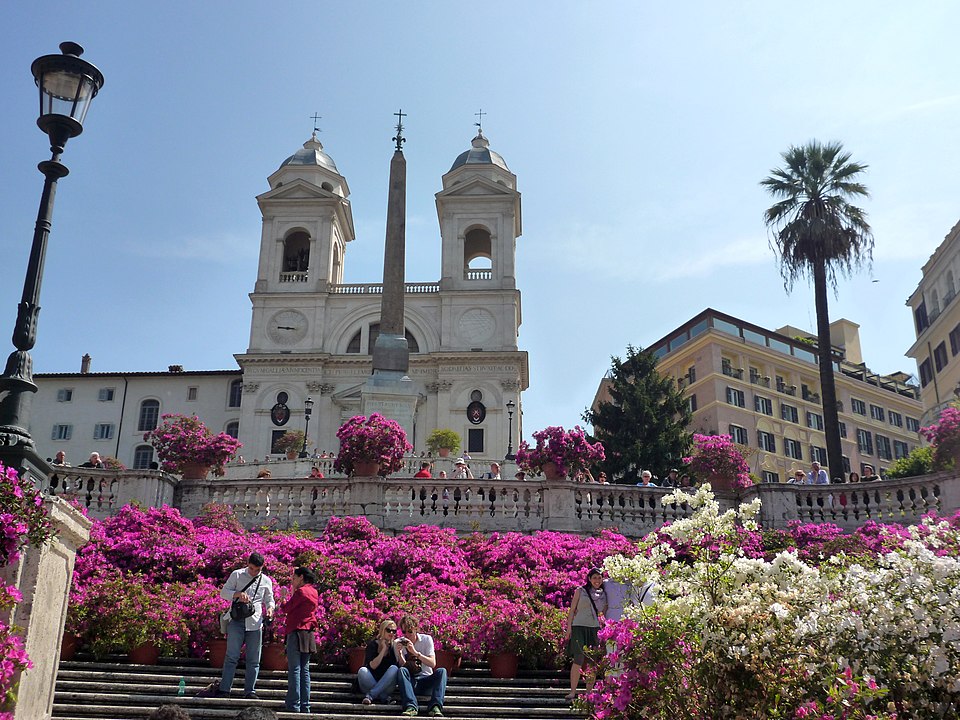
The Spanish Steps are a great starting point for further exploration of Rome. In their immediate vicinity there are many places worth seeing, even with a short walk.
💠 Via dei Condotti
It starts exactly opposite the stairs. It's one of the most luxurious shopping streets in Rome - perfect for a stroll among the boutiques of the fashion world's biggest brands.
💠 Home of Keats and Shelley
Right next to the stairs is located museum dedicated to English Romantic poets. It's worth a look here, especially if you're interested in literature and cultural history.
💠 Trevi Fountain
One of the most famous fountains in the world is located in the just a 10-minute walk From the Spanish Steps. Be sure to drop a coin to "ensure" your return to Rome.
💠 Villa Borghese
A little higher up behind the Trinità dei Monti church is the entrance to the Villa Borghese Park - the green heart of the city with beautiful alleys, an art gallery and vantage points overlooking Rome.
💠 Piazza del Popolo
Also not far away, this historic square with an Egyptian obelisk and twin churches is another obligatory place On a walking tour of the center.
Summary - why you should visit the Spanish Steps
The Spanish Steps is not just a historic structure in the heart of Rome - it is a meeting place, culture and history, which has attracted people from all over the world for centuries. Combining the elegance of Baroque architecture with the vibrancy of the city, they create a unique space: romantic, inspiring and photogenic.
From the spring azalea festival, to evening walks and movie memories, to the neighborhood of the Italian capital's top attractions. is one of those places that you simply have to see with your own eyes. Whether you're here for the first time or returning years later, the Spanish Steps always delight anew.

